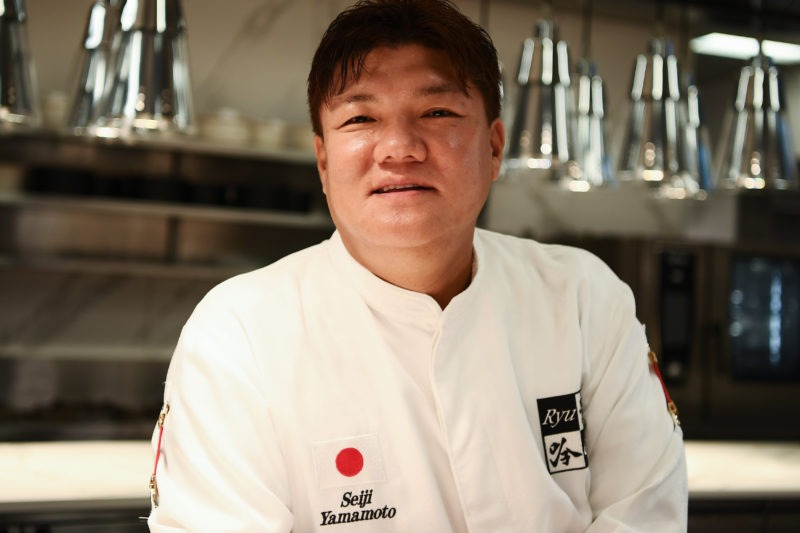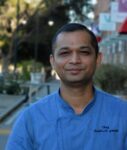‘Curry for salarymen’: Top ‘La Liste’ chef recalls early days
Japanese chef Seiji Yamamoto remembers the tougher times (CHARLY TRIBALLEAU)
Tokyo (AFP) – A Tokyo chef whose restaurant has been ranked one of the world’s top places to eat told AFP how he was once reduced to whipping up lowly curry to attract diners to his empty tables.
Seiji Yamamoto is chef of the famously innovative Ryugin restaurant in Tokyo, which was placed joint top of La Liste’s “guide of guides” published on Friday.
But success did not come easy for the now 49-year-old, who is so meticulous he uses CT scans to better understand the bone structure of the fish he cooks.
Yamamoto said he was “honoured” to receive the accolade but it led him to reflect on his struggles when he opened his first restaurant more than a decade ago.
“I was 33 and was told I was young and green. There were times when we had no customers. We even used to make curry, hoping salarymen would drop by,” he told AFP in his dining room.
“I would not have dreamed at that time that I would receive Michelin stars or a top place” in international rankings, added Yamamoto, whose Ryugin restaurant also earned three stars in the latest gourmet guide.
Yamamoto’s journey to become a chef began at the tender age of 15, when he graduated from junior high school.
“I didn’t think about anything other than cooking,” the chef said.
“It’s my life. If I were not a chef now, I could be homeless lying outside the exit of Shinjuku station,” the world’s busiest transport hub in central Tokyo.
– ‘Colourful cute fish’ –
Ryugin, whose ceilings are covered with wood and rooms divided with traditional paper and screens, jumped 30 places to reach the joint top spot in this year’s France-based list.
Known as the “king of kaiseki” — the traditional multi-course Japanese meal — Yamamoto said he is constantly seeking answers to the question “What is Japanese cuisine?”
“Japanese cuisine isn’t just about fulfilling the stomach. It also fulfills the spirit,” he said.
“Food isn’t just food. It’s also a sensation and a memory and we’re responsible for creating it.”
“Each ingredient has the energy of life, when it was growing in the mountain or swimming in the sea. It’s meaningless if I cannot express this energy.”
Yamamoto feels he has an almost patriotic duty to carry on the tradition of Japanese cuisine, describing it as a “national job.”
“I express the richness of Japanese nature through food. I hope to be able to tell how rich the country is to people who visit Japan,” he said.
For this reason, he does not use the same Japanese ingredients in his other restaurants in Taiwan and Hong Kong.
“I think Japanese cuisine should be expressed by using the richness of local land… otherwise it’ll be just a copy of the main restaurant.”
His quest for perfection has even led him to use CT scans on fish.
“Doctors cannot carry out surgery without knowing the human body. I think it’s wrong (for chefs) to cut fish without knowing its bone structure and organs.”
Even when he is on vacation, he does not stop learning about ingredients.
A qualified scuba diver, Yamamoto often dives in Izu, a peninsula southwest of Tokyo — to check out the fish.
“While other divers enjoy watching colourful cute fish, I’m watching edible fish or shrimp,” he laughed.
“It’s a joy to be able to see them so close to my own eyes in the open.”
In addition to Ryugin, Yosuke Suga’s Tokyo restaurant Sugalabo, which has only 20 tables, shares the top spot on the La Liste ranking alongside the reigning leaders, Guy Savoy in Paris and New York’s Le Bernardin.
La Liste, launched in 2015, ranks the 1,000 best restaurants in the world by aggregating millions of reviews from guides such as the Michelin to newspapers and websites like Yelp and TripAdvisor.
Disclaimer: Validity of the above story is for 7 Days from original date of publishing. Source: AFP.


